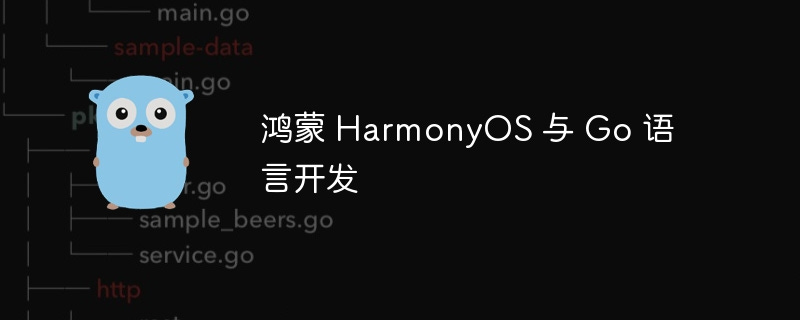HarmonyOS and Go language development
Did you know that Go language is adaptable to HarmonyOS development? Let's dig in!
Dear Programming Learning Enthusiasts, if you click on this article, it means that you are very interested in HarmonyOS and Go Language Development. This article will give you a detailed analysis, mainly to introduce, I hope that all the children's shoes who have read carefully have been substantially improved.
HarmonyOS and Go language development
Brief introduction
The combination of HarmonyOS, a distributed operating system developed by Huawei, and Go, a modern programming language, provides a powerful solution for developing distributed applications. In this article, we'll show you how to develop in Go on HarmonyOS, and use real-world examples to deepen your understanding.
Installation & Setup
To develop HarmonyOS apps in Go, you need to first install the Go SDK and the HarmonyOS SDK. The specific steps are as follows:
# Install the Go SDK
go get github.com/golang/go
# Setting the PATH environment variable
export PATH=$PATH:<path_to_go_bin_directory>
# Install the HarmonyOS SDK
mkdir -p ~/harmonyos_devtools
cd ~/harmonyos_devtools
wget https://developer.harmonyos.com/resource/devkit/HarmonyOS-DevKit.zip
unzip HarmonyOS-DevKit.zip
export PATH=$PATH:~/harmonyos_devtools/harmony devtools
With /HarmonyOS_IDE_for_Eclipse/binDevelop a simple sample app
Now, we can start developing a simple HarmonyOS application. Open the HarmonyOS IDE for Eclipse and create a new project:
1
File -> New -> HarmonyOS Application Project -> Basic/Empty Application
Select your project name and path, and then select Device Emulator in the Device Mode tab.
Create a file named in the root directory of your project and enter the following code:main.go
package main
import (
"fmt"
"time"
"ohos"
)
func main() {
fmt.Println("Hello, world!")
time.Sleep(time.Second * 5)
}
func init() {
ohos.Init()
}Compile and run
Right-click on the project and select Run As -> HarmonyOS Application on Device/Simulator. Your sample app will run in the device emulator and print "Hello, world!" in the console.
Add HarmonyOS controls
To add HarmonyOS controls, you need to import modules and use , , and types. Here are the modified files:ohos.hiview.pkgPageTextButtonmain.go
package main
import (
"fmt"
"time"
"ohos"
"ohos.hiview.pkg"
)
func main() {
// Create a page
page := hiview.NewPage(hiview.PageParams{
PageName: “main”,
})
// Create a text control
text := hiview.NewText(hiview.TextParams{
Text: “Hello, HarmonyOS!
})
// Create a button control
button := hiview.NewButton(hiview.ButtonParams{
Text: "Click Me",
Height: hiview.MatchParent,
Width: 150,
})
// Add controls to the page
page.Add(text)
page.Add(button)
// Listen for button clicks
button.SetOnClickListener(func(view interface{}, event *hiview.Event) {
fmt.Println("Button clicked!")
})
// Destroy the interface
defer page.Destroy()
// Manage state as a stack
componentStack := hiview.NewComponentStack(hiview.StackParams{
RootPath: "/pages/main",
})
componentStack.PushPage(page)
// Launch Page Manager
pageManager := hiview.NewPageManager(hiview.PageManagerParams{})
pageManager.SetStack(componentStack)
time.Sleep(time.Second * 5)
}
func init() {
ohos.Init()
}conclusion
By combining the distributed capabilities of HarmonyOS with the efficiency of Go, you can develop powerful distributed applications. This article provides code samples to help you get started with HarmonyOS and Go development.
The above is the detailed content of "HarmonyOS and Go Language Development", for more information about Go and HarmonyOS, please pay attention to the official account of golang learning network!




